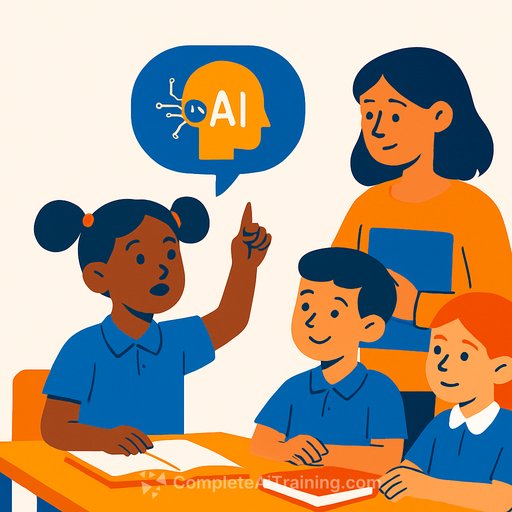Listen to primary pupils on AI: practical guidance for schools
Primary pupils have clear views on artificial intelligence. Their message: involve us, respect our rights, and address bias and access issues early.
At the Lovelace-Hodgkin Symposium on AI Ethics at the University of Glasgow, Dr Mhairi Aitken of The Alan Turing Institute shared evidence from UK surveys and school workshops that points to both excitement and concern among children aged 8-12.
What children are telling us
- Only 22% of surveyed 8-12-year-olds report using generative AI. Girls and private school pupils are more likely to use it.
- Children with additional learning needs report higher use for communication and connection. This area needs focused support and safeguards.
- Many prefer traditional art over AI tools. They feel more pride in work made by hand and question the value of AI-generated outputs.
- Bias is visible. In one workshop, repeated prompts for "a girl with brown skin" returned images of a white girl, which children found distressing.
- Other concerns: racial bias in images, environmental impacts of compute, and the risk of inappropriate content.
- Pupils feel their interests and rights are rarely considered in AI design, deployment, and policy. Their first demand: "listen to children."
What teachers report
Many teachers are optimistic about using generative AI to support their own work. At the same time, they are worried about student use: plagiarism, cheating, and weaker critical thinking.
This gap-positive about staff use, cautious about student use-needs open discussion, clear policy, and classroom routines that build judgment, not shortcuts.
Equity and access
Access patterns differ. Private school pupils report higher use; pupils with additional needs use AI differently and often for connection.
Without intentional planning, unequal access to tools and guidance can widen existing gaps in learning opportunities and outcomes.
Actions for school leaders and classroom teachers
- Create student AI councils or termly focus groups in upper primary. Use them to review tools, surface concerns, and co-create classroom norms.
- Run safe, structured AI "sandboxes." Let pupils test prompts, evaluate outputs, and document what is helpful or harmful.
- Teach bias-spotting. Use controlled prompt sets (e.g., art and description tasks across identities) and compare outputs. Discuss why bias happens and what to do next.
- Keep art hands-on by default. If AI is used, be explicit about the learning goal (ideation vs. execution) and credit authorship clearly.
- Support additional needs. Co-design use-cases with the SENCO and families (communication aids, planning supports), and enable safety filters and audit logs.
- Plan for access. Provide device time for those without home access, filtered accounts, and offline alternatives for any AI-dependent tasks.
- Clarify academic honesty. Require disclosure of AI assistance, use staged drafting to check thinking, and assess process as well as product.
- Adopt a tool checklist: data protection compliance, content filters, bias evaluation, explainability of features, accessible design, and teacher oversight.
- Discuss environmental costs. Set sensible usage norms (short sessions, local tools where possible) and integrate this into digital citizenship.
Policy implications
Children are most affected by AI decisions yet rarely included in them. Invite pupils into procurement pilots, acceptable-use updates, and classroom trials.
Work with child-rights groups and local youth forums. The goal: policies that reflect pupil voice, protect rights, and support meaningful learning.
Recommended resources
- The Alan Turing Institute - research and guidance on AI and data ethics.
- Council of Europe: AI and children's rights - principles and policy resources for child-centred AI.
Professional development
If your staff need structured training on AI use, ethics, and classroom practice, explore curated options by role at Complete AI Training.
Your membership also unlocks:






